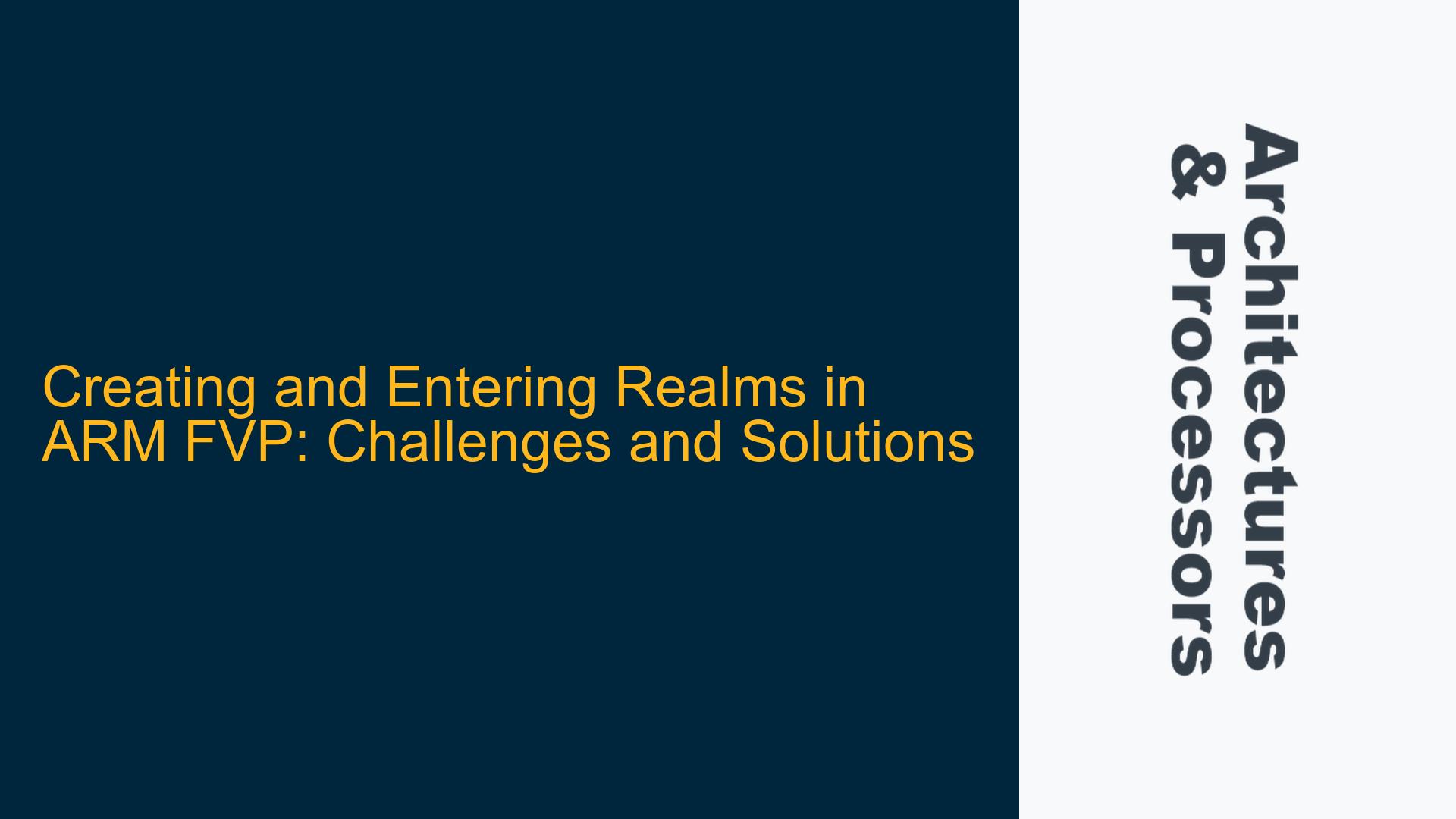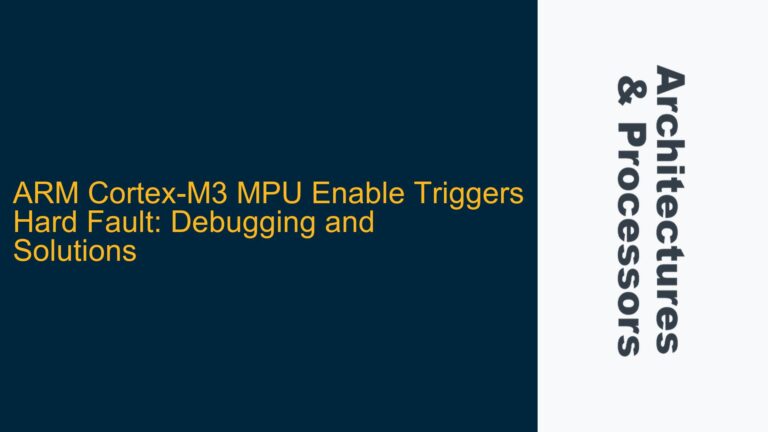ARM FVP Realm Creation and Entry Feasibility
The concept of Realms within ARM’s Fixed Virtual Platforms (FVP) is a critical aspect of modern ARM-based system-on-chip (SoC) design, particularly when dealing with secure environments and virtualization. Realms are isolated execution environments that provide a secure space for running trusted applications, separate from the normal world and the hypervisor. The ability to create and enter Realms in ARM FVP is essential for developers working on secure systems, as it allows for the simulation and verification of secure software and hardware interactions.
ARM FVP is a versatile tool that emulates ARM-based systems, enabling developers to test and debug their designs without the need for physical hardware. However, the process of creating and entering Realms in FVP is not always straightforward. The feasibility of creating and entering Realms in ARM FVP depends on several factors, including the specific version of the FVP being used, the configuration of the virtual platform, and the software stack being employed.
In the context of ARM FVP, Realms are typically associated with ARM’s TrustZone technology, which provides hardware-based isolation between the secure and non-secure worlds. TrustZone allows for the creation of secure environments where sensitive operations can be performed without the risk of interference from non-secure software. Realms extend this concept by providing an additional layer of isolation within the secure world, enabling multiple secure environments to coexist.
The creation of Realms in ARM FVP involves configuring the virtual platform to support the necessary hardware and software components. This includes setting up the appropriate memory regions, configuring the TrustZone hardware, and ensuring that the software stack supports the creation and management of Realms. The process of entering a Realm involves switching the processor’s execution state to the Realm world, which requires specific instructions and configurations.
Configuration and Software Stack Limitations
One of the primary challenges in creating and entering Realms in ARM FVP is the configuration of the virtual platform. The FVP must be configured to support the necessary hardware features, such as TrustZone and the Realm Management Extension (RME). The RME is an optional extension to the ARM architecture that provides additional hardware support for Realms, including the ability to manage Realm descriptors and perform Realm world switches.
The configuration of the FVP to support Realms involves setting up the appropriate memory regions and configuring the TrustZone hardware. This includes defining the secure and non-secure memory maps, configuring the memory protection units (MPUs), and setting up the necessary interrupt controllers. The FVP must also be configured to support the RME, which involves enabling the appropriate hardware features and configuring the Realm descriptors.
The software stack is another critical factor in the creation and entry of Realms in ARM FVP. The software stack must include the necessary components to support Realms, including the Realm Management Monitor (RMM) and the Realm World Software (RWS). The RMM is responsible for managing the Realm descriptors and performing Realm world switches, while the RWS provides the runtime environment for the Realm.
The software stack must also include the necessary drivers and libraries to support the creation and management of Realms. This includes the TrustZone drivers, which provide the necessary interfaces for configuring the TrustZone hardware, and the RME drivers, which provide the necessary interfaces for managing the Realm descriptors. The software stack must also include the necessary runtime libraries and tools to support the development and debugging of Realm applications.
Implementing Realm Creation and Entry in ARM FVP
To implement Realm creation and entry in ARM FVP, developers must follow a series of steps to configure the virtual platform and the software stack. The first step is to configure the FVP to support the necessary hardware features, including TrustZone and the RME. This involves setting up the appropriate memory regions, configuring the MPUs, and enabling the necessary hardware features.
Once the FVP is configured, the next step is to set up the software stack to support Realms. This involves installing the necessary components, including the RMM and the RWS, and configuring the software stack to support the creation and management of Realms. The software stack must also include the necessary drivers and libraries to support the development and debugging of Realm applications.
The process of creating a Realm in ARM FVP involves defining the Realm descriptor, which describes the memory regions and other resources associated with the Realm. The Realm descriptor is typically defined in the RMM, and it includes information such as the base address and size of the Realm’s memory regions, the access permissions for the memory regions, and the interrupt configuration for the Realm.
Once the Realm descriptor is defined, the next step is to perform a Realm world switch to enter the Realm. This involves executing the appropriate instructions to switch the processor’s execution state to the Realm world. The Realm world switch is typically performed by the RMM, which uses the Realm descriptor to configure the processor’s execution state and switch to the Realm world.
After entering the Realm, the developer can execute the Realm application within the secure environment provided by the Realm. The Realm application can perform sensitive operations without the risk of interference from non-secure software, and it can interact with other Realms and the non-secure world through the appropriate interfaces.
In conclusion, creating and entering Realms in ARM FVP is a complex process that requires careful configuration of the virtual platform and the software stack. Developers must ensure that the FVP is configured to support the necessary hardware features, including TrustZone and the RME, and that the software stack includes the necessary components to support the creation and management of Realms. By following the steps outlined above, developers can successfully create and enter Realms in ARM FVP, enabling them to develop and verify secure applications within a simulated environment.






